When Traumatic Brain Injury is mentioned or the acronym TBI, people assume it was caused by some kind of impact to the head. That’s often not the case. TBIs can occur due to various mechanisms, and not all involve a physical impact on the head. There are other ways to sustain traumatic brain injuries. Here are three more common ways you might not have thought of.
Acceleration-Deceleration Injuries
When a person’s head rapidly accelerates and decelerates, such as during a car accident, fall, or sports-related incident, the brain may move inside the skull, leading to injury. This type of injury is often called a whiplash injury. It typically occurs due to sudden and forceful acceleration followed by rapid deceleration of the head and neck. This causes the brain to move inside the skull and result in various injury levels.
Whiplash injuries are commonly associated with motor vehicle accidents, particularly rear-end collisions. While most people think of a whiplash injury as a neck injury, that’s not necessarily true. The impact of the collision causes the head and neck to be thrown forward and then suddenly jerked backward, straining the neck muscles and damaging the soft tissues of the neck as well as causing the brain to impact the inside of the skull.
The severity of TBI caused by acceleration-deceleration can vary widely, ranging from mild concussions to more severe injuries, such as contusions, hemorrhages, and diffuse axonal injuries.
It is crucial to seek immediate medical attention if someone experiences symptoms of TBI after a whiplash injury. A healthcare professional will assess the severity of the injury, provide appropriate treatment, and monitor the individual’s recovery.
Recovery from TBI caused by acceleration-deceleration can vary based on the extent of the injury. Mild cases may improve with rest and symptom management over time, while more severe cases might require specialized medical care, rehabilitation, and therapy to aid in recovery and functional improvement.
Vehicle Accidents
You may have associated whiplash injuries with lawyers. The reason is that many motor vehicle accidents, especially those involving rear-end collisions, cause whiplash injuries. Those accidents are usually the fault of one of the parties, and the injured person often is entitled to compensation to cover medical and ongoing expenses. Insurance companies usually offer to settle for basic expenses; a skilled attorney is needed to get the full compensation.
Blast Injuries: Explosions
Traumatic Brain Injury (TBI) caused by blasts or explosions is often referred to as “Blast-Induced Traumatic Brain Injury” (bTBI). This is a form of a TBI with no impact to the head. It usually occurs when a person is exposed to the shockwave produced by an explosion, which generates a rapid and intense change in air pressure. This sudden pressure wave can cause significant damage to the brain, even if there are no visible external injuries.
bTBI is commonly associated with military personnel exposed to improvised explosive devices (IEDs) or individuals involved in industrial accidents, terrorist attacks, or other explosives. In the case of industrial accidents, you must be represented by an attorney who is working for your interests. The attorneys assigned to you by the company are likely to be working to protect the company’s interest. They are not focused on getting you the maximum compensation you deserve.
Any kind of explosion that produces a strong shockwave can potentially cause bTBI injuries to people who are nearby. These are not always military or industrial. An accidental explosion in a home or vehicle can also be the cause. Be aware of the symptoms of a TBI and seek medical attention if there are any signs of injury. The symptoms of a bTBI are essentially the same as those of a TBI involving an impact.
Mechanisms of bTBI
The mechanisms of bTBI are complex and can involve both primary and secondary injury mechanisms:
Primary injury: The rapid and intense change in air pressure during the explosion can cause the brain to move inside the skull. This movement can result in shear forces and stress, leading to direct physical damage to brain tissue.
Secondary injury: After the initial blast, there can be a cascade of events in the brain, including inflammation, oxidative stress, and changes in neurotransmitter levels, which may cause additional damage and exacerbate the injury.
Diagnosing bTBI can be challenging since the external signs of injury may be minimal or absent. Medical professionals use a combination of neurological examinations, imaging studies (such as CT scans or MRI), and clinical history to make an accurate diagnosis.
Shaken Baby Syndrome
Shaken Baby Syndrome (SBS) is a severe form of abusive head trauma that occurs when an individual. Typically a caregiver, forcefully shakes an infant or young child. The shaking motion can cause the baby’s head to whip back and forth rapidly, leading to serious and often life-threatening injuries to the brain and other organs.
Infants are particularly vulnerable to this TBI with no impact to the head because their neck muscles are not fully developed, and their skulls are relatively larger than their bodies. This combination makes them more susceptible to brain injury from shaking motion.
The primary mechanism of injury in Shaken Baby Syndrome includes:
Diffuse Axonal Injury: The rapid and violent shaking can cause the brain to move inside the skull, resulting in shearing forces that tear nerve fibers (axons) in the brain. This leads to widespread damage to the brain’s white matter, which is responsible for transmitting signals between different brain regions.
Subdural Hematomas: Shaking can cause blood vessels in the brain to rupture, accumulating blood between the brain’s surface and its protective covering (the dura). This condition is a subdural hematoma and can exert pressure on the brain, causing further injury.
Retinal Hemorrhages: Intense shaking can cause bleeding in the retina of the eyes, which can be visualized during an eye examination.
Impact of SBS
The consequences of Shaken Baby Syndrome can be severe and long-lasting. Infants who survive may suffer from:
-
- Brain damage
- Developmental delays
- Intellectual disabilities
- Vision and hearing impairments
- Seizures
- Physical disabilities
- Learning difficulties
- Behavioral problems
- Paralysis
- Coma
- Death
Shaken Baby Syndrome is a preventable form of child abuse. It is essential for caregivers and parents to be aware of the dangers of shaking an infant. They should know the need to handle babies gently and with care. When feeling overwhelmed or frustrated, seeking support from friends, family, or professional resources is crucial rather. Often, these situations occur and develop quickly, and the perpetrator does not think about what he or she is doing in a heated moment.
Education and awareness campaigns about the dangers of Shaken Baby Syndrome are essential to prevent these tragic incidents from occurring. Healthcare professionals, childcare providers, and community members play a crucial role in identifying and reporting suspected child abuse cases. People who don’t have the patience to handle small children should not be in a situation where they can become overwhelmed and take impulsive action. Not only is it extremely harmful to the child, the legal consequences for the perpetrator are harsh and unforgiving.
Conclusion for TBI with no Imact to the Head
The symptoms of a TBI may not be immediately evident, so it’s essential to seek medical attention if there is any suspicion of a brain injury. A TBI with no impact to the head is more common than you think. TBIs are not always caused by direct impacts to the head. TBIs can range from mild to severe, and their effects can be long-lasting or even life-threatening. Timely evaluation and appropriate treatment are crucial. In addition to the medical issues, it is also important to involve a competent lawyer if you are involved in an industrial or other accident.


